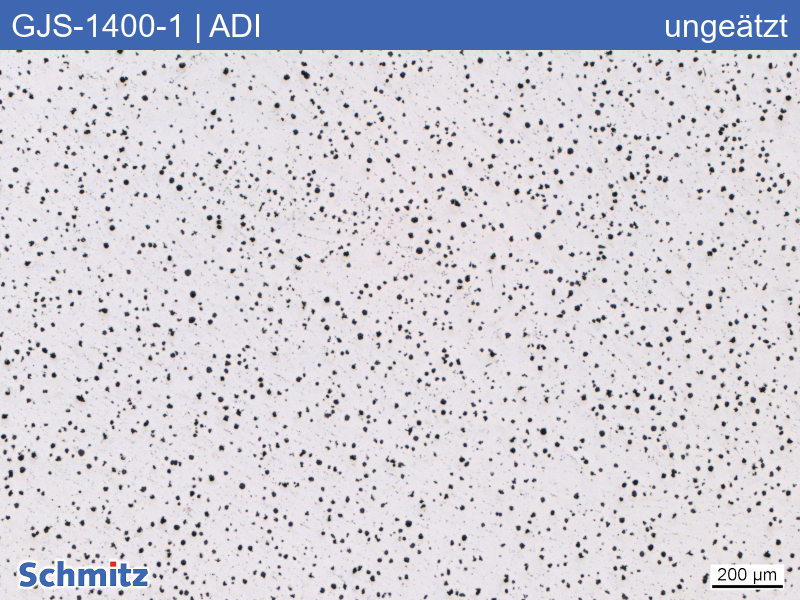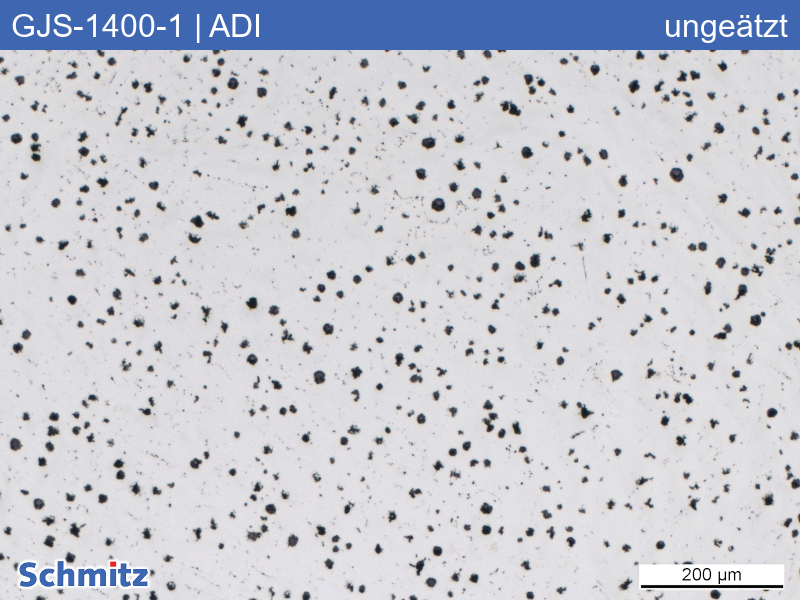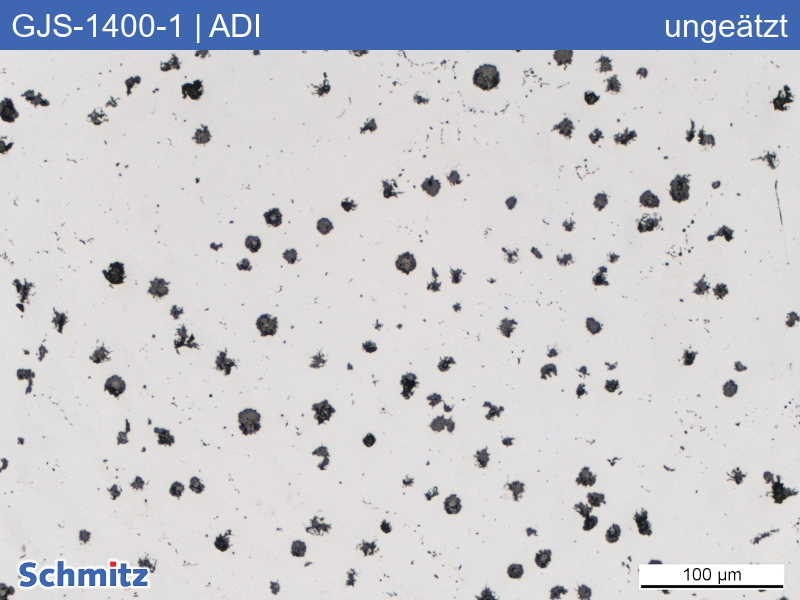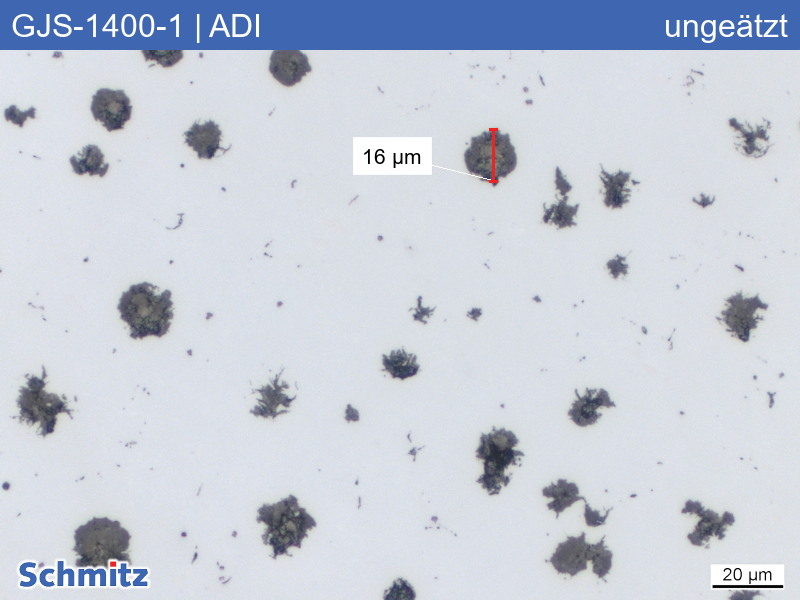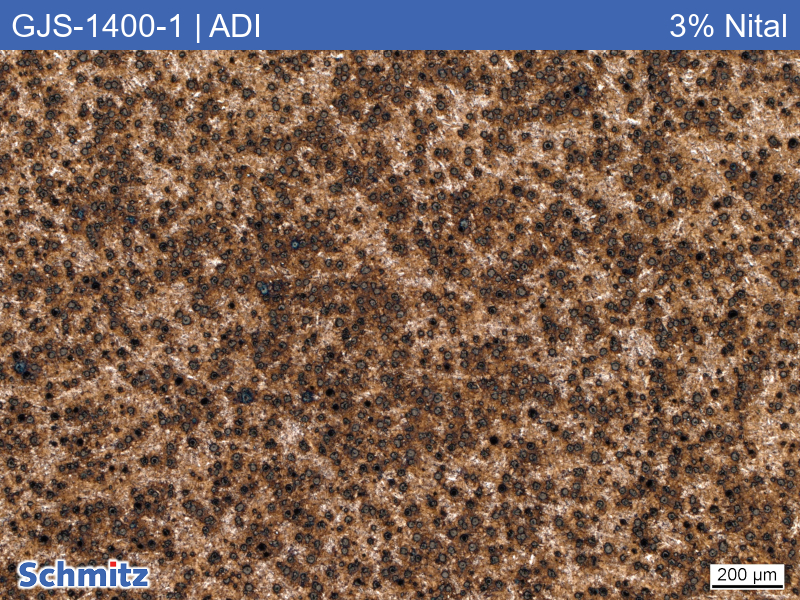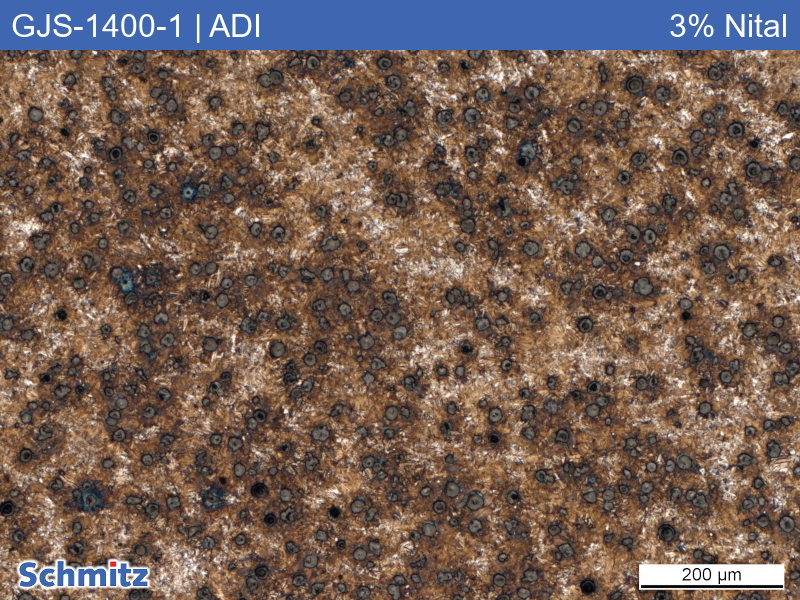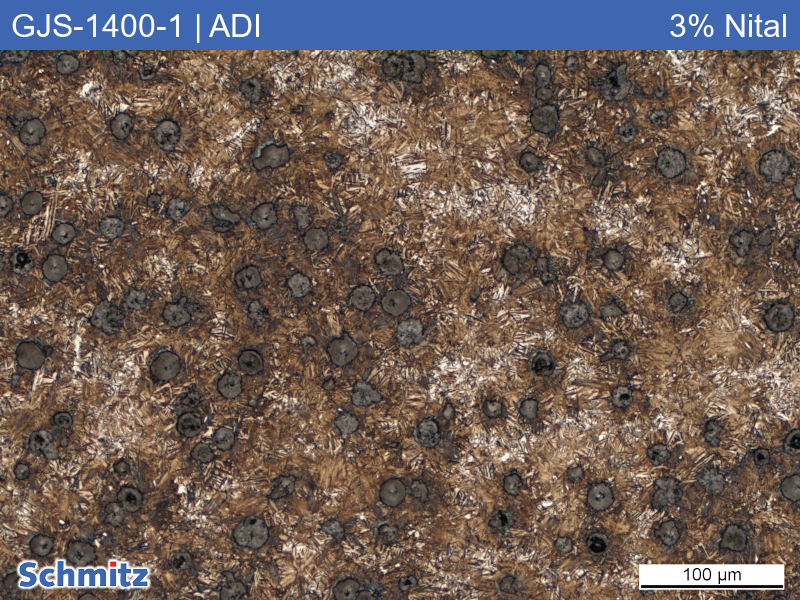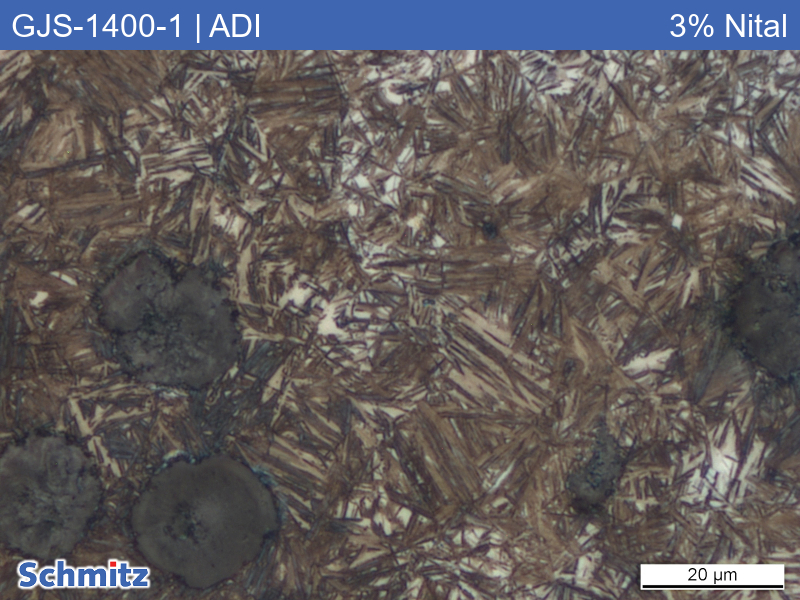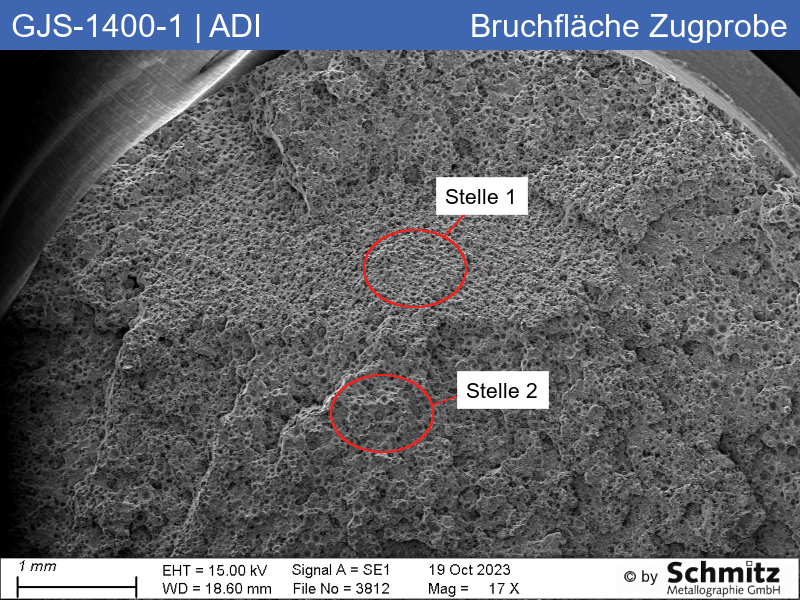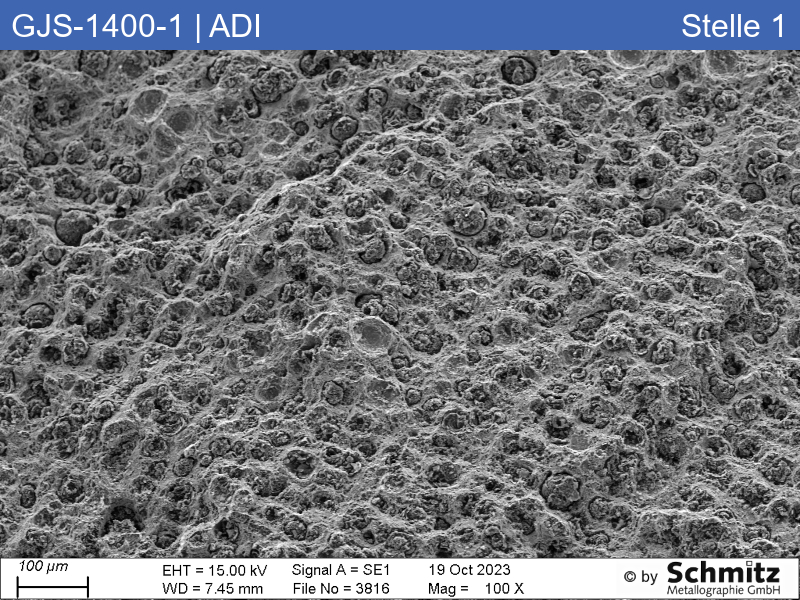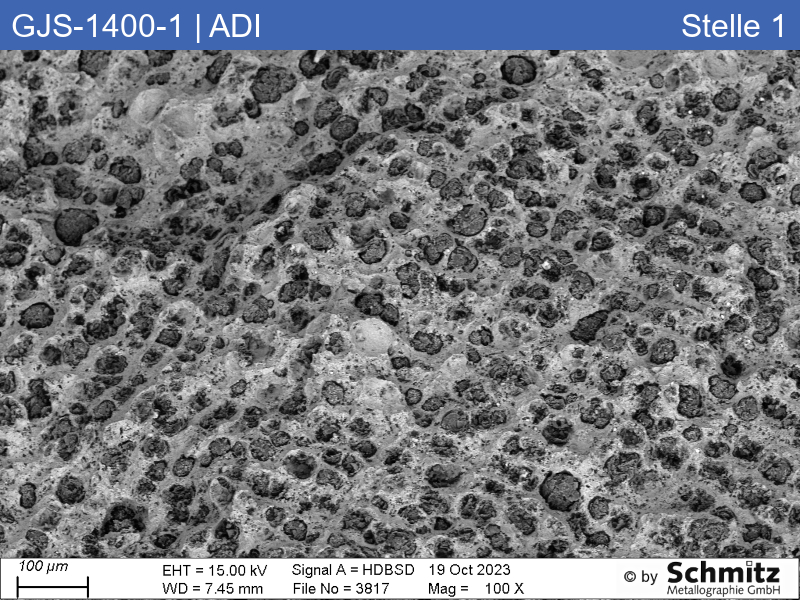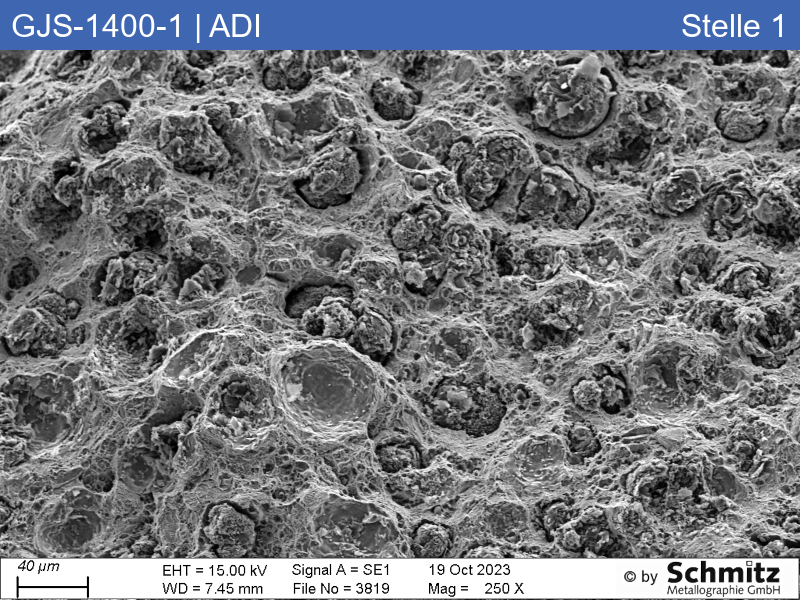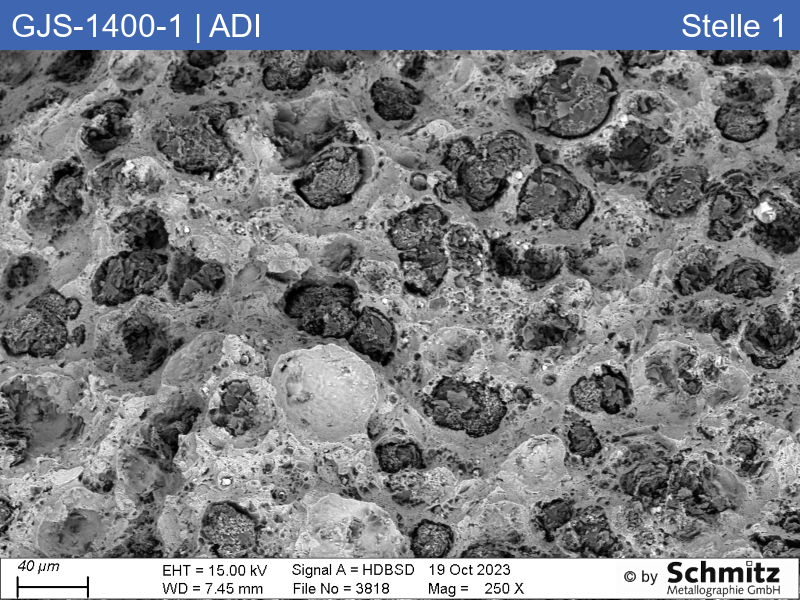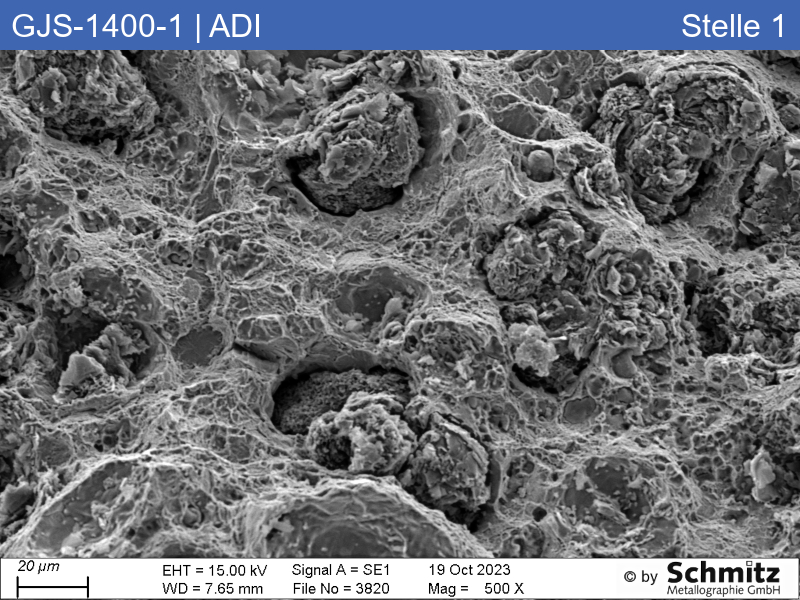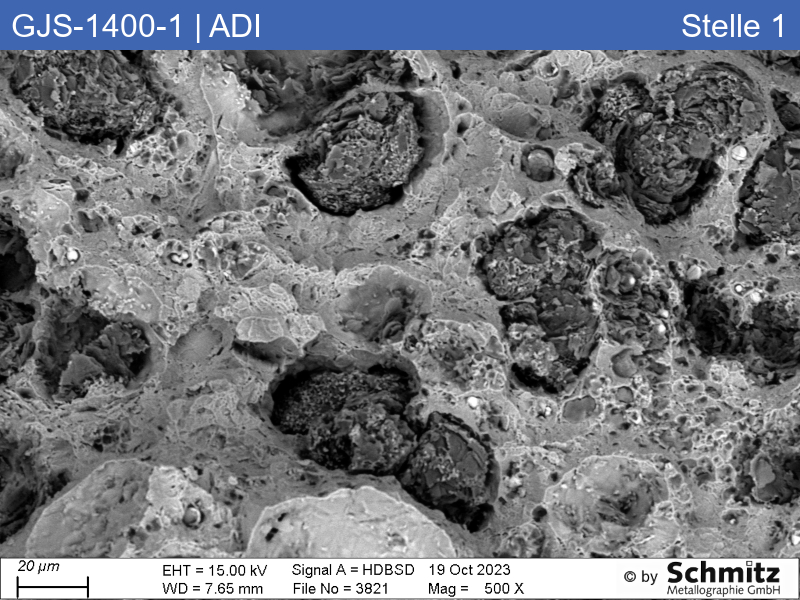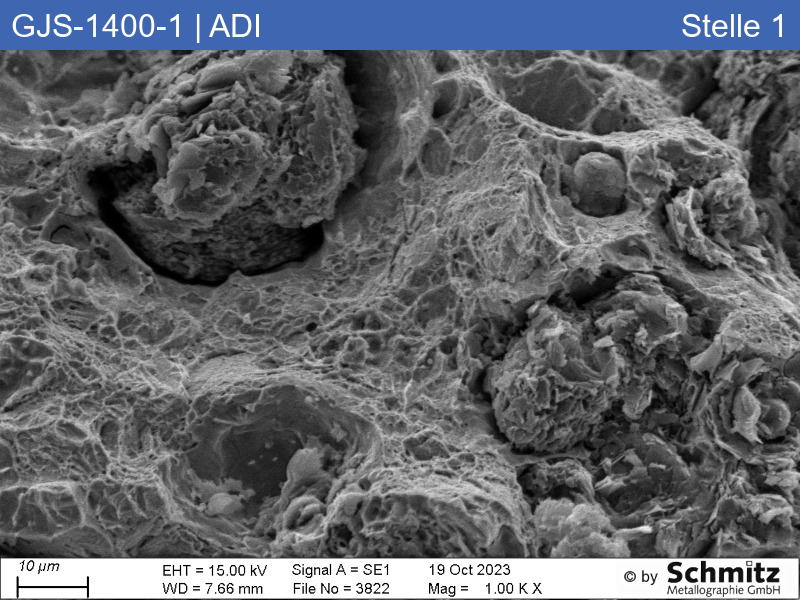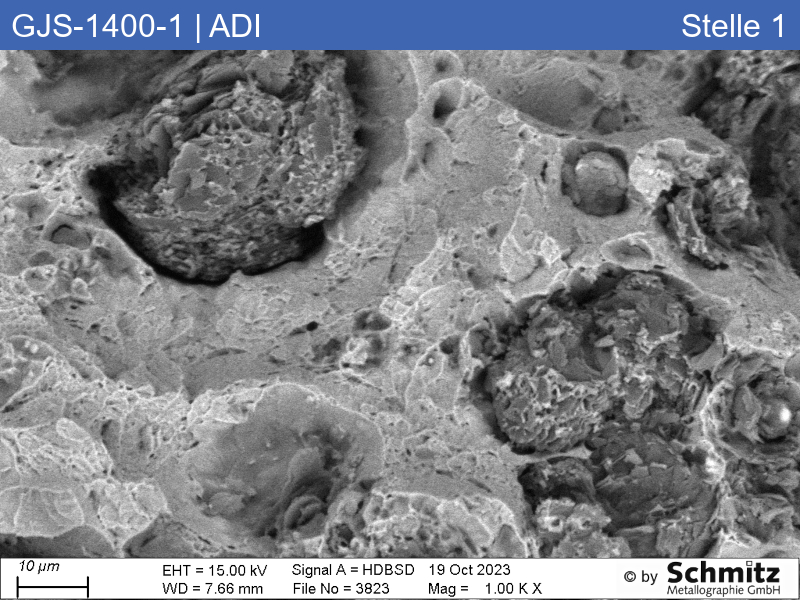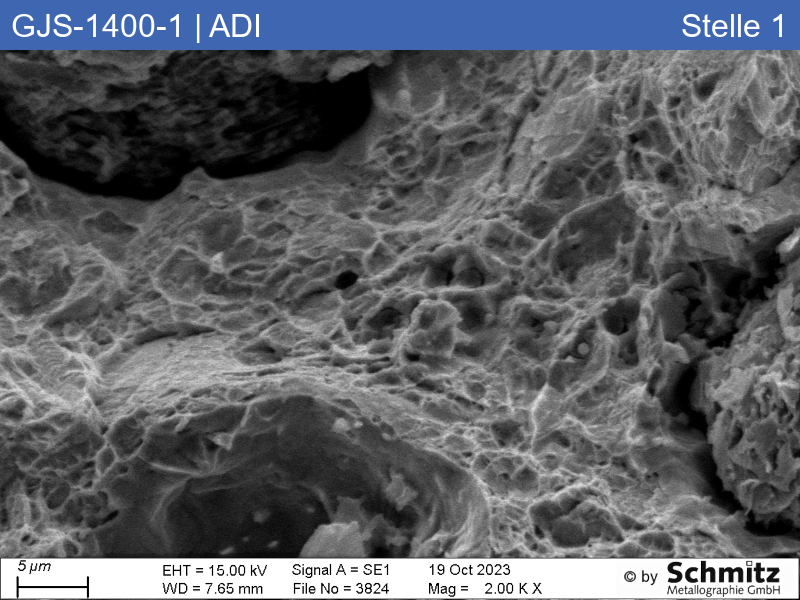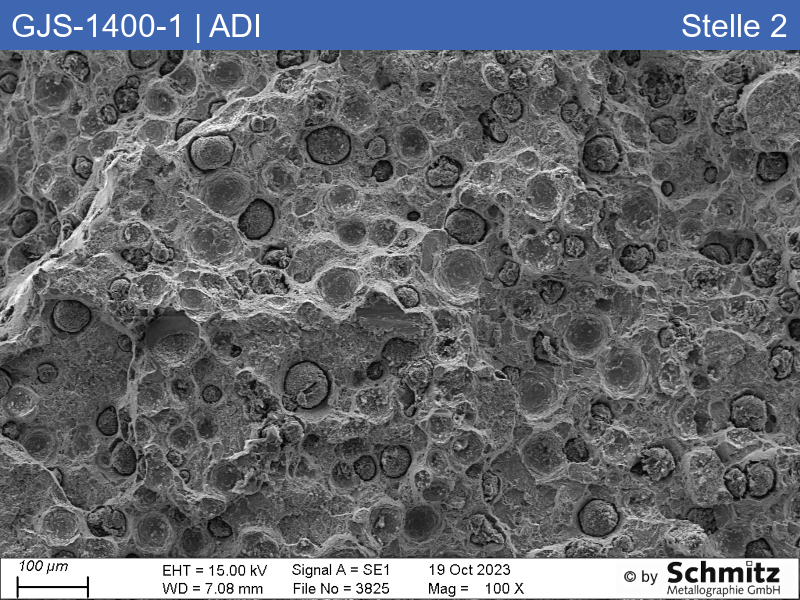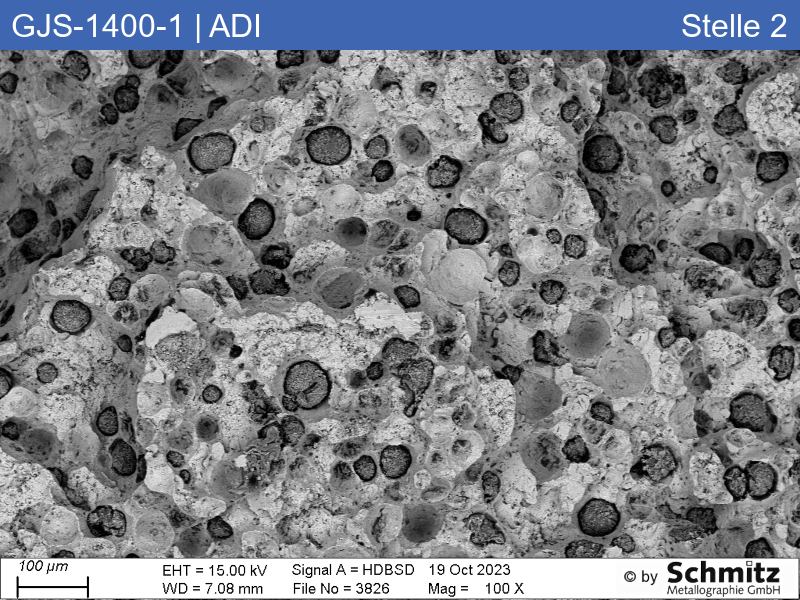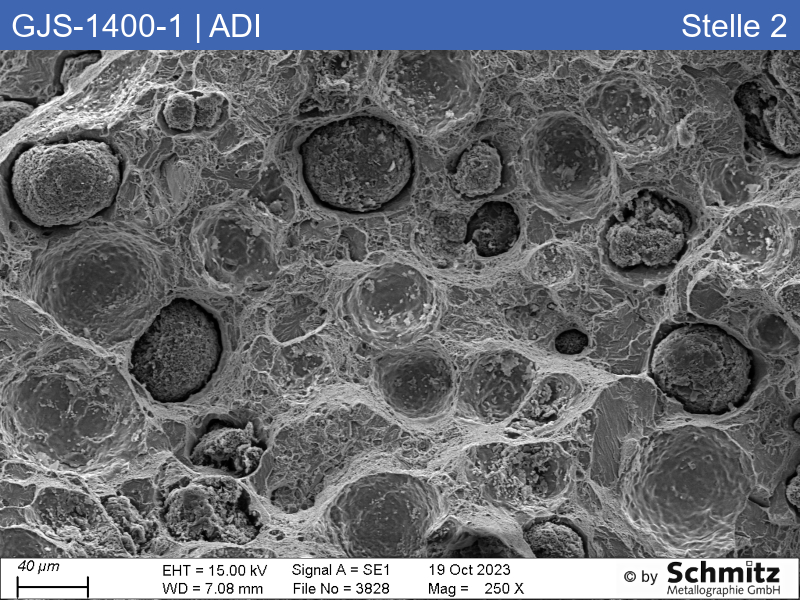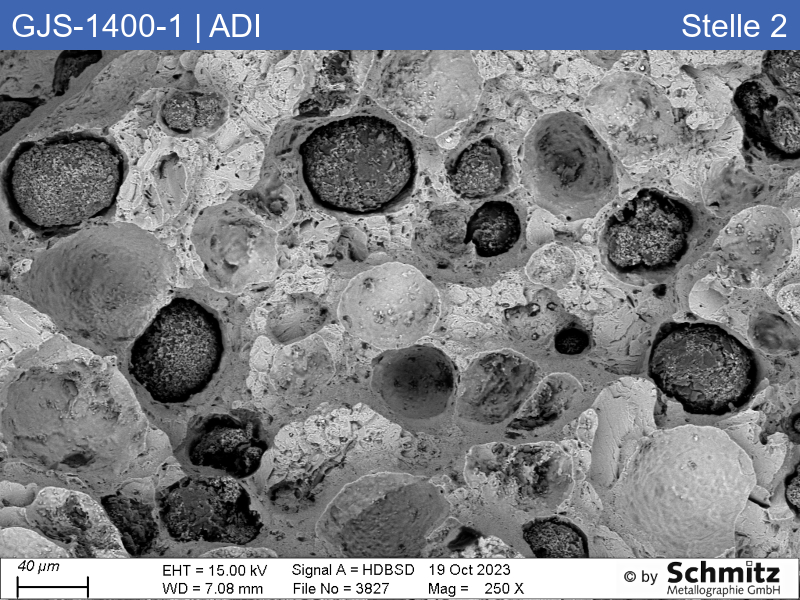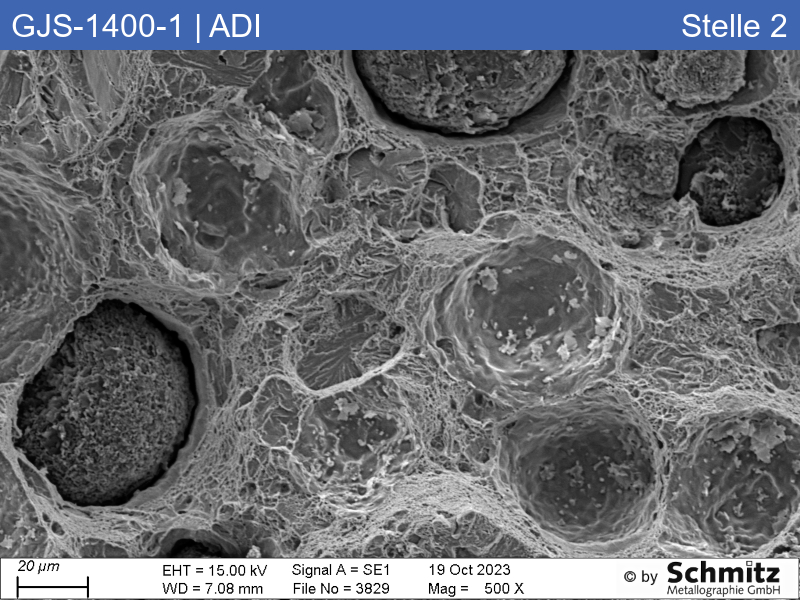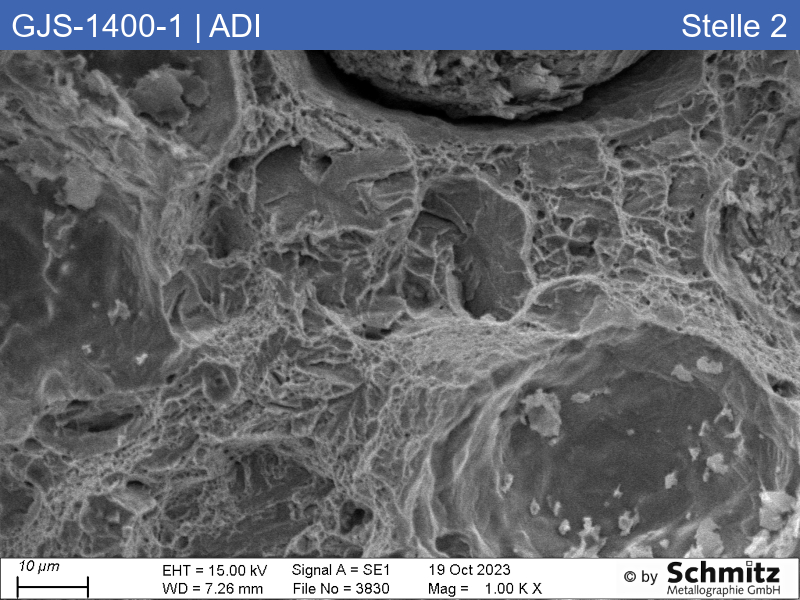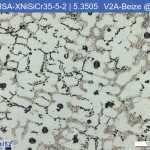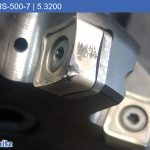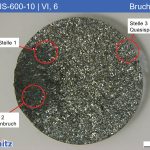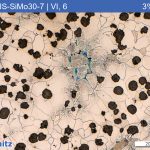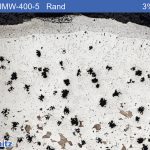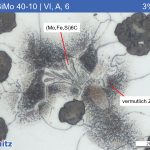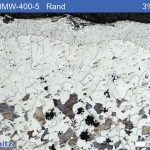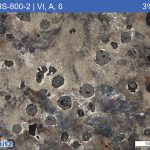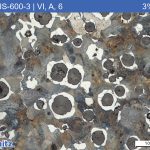GJS-1400-1 | ADI | Fracture appearance in tensile test
| Numeric designation | GJS-1400-1 | EN-JS1130 |
|---|---|
| Chemical designation | ADI |
| Etching | 3% Nital |
ADI is the abbreviation for “Austempered Ductile Iron”. According to German standardisation, it is referred to as “bainitic cast iron with nodular graphite”, although its structure is not supposed to contain any bainite at all. Heat treatment (“isothermal hardening” in the range of 400-240 °C) produces an ausferritic microstructure in which ferrite needles are present in an austenitic matrix supersaturated with carbon (ausferrite).
The microstructure present here consists only of martensite and retained austenite. It occurs when quenching directly to room temperature (or cooling much too early from the ausferrite temperature). Since there are no transformation retarding elements (Cu, Ni, Mo), the quenching will have been very fast (about 10s or less) to avoid the pearlite nose. Ausferrite formation starts after about 100s at 250 °C. We suspect that there was no holding step at all and the quenching was done directly at room temperature. At the austenitisation temperature, about 1 wt.% C is dissolved in the austenite (depending on the exact temperature). This means you can expect a fair amount of residual austenite. Some of it transforms during tempering, but probably not all. Elongation at fracture and toughness are very low. There may have been more C in the austenite far away from the carbon in austenite (more residual austenite), but it could also be due to slightly higher Mn content (due to crystal segregation during solidification).
Chemical composition in wt.-%:
- C 3.50 (Leco)
- Si 2.55
- Mn 0.629
- P 0,0312
- S 0.0068 (Leco)
- Mg 0.0054
- Ni 0.005
- Cu 0.009
- Mo <0.00500
- Al 0.0072
- Ti 0.0407
- Ca 0.0028
- Cr 0.0086
Mechanical properties in tensile test:
- Rp0.2: 932 MPa (below nominal value)
- Rm: 1328 MPa (below nominal value)
- A: 2,5 %
- Z: 2,9 %
In the fracture surface of the tensile specimen, an area with finer graphite and visible dendritic solidification is noticeable.
The majority of the fracture surface contains larger graphite spheres than in the section.
The fracture of the matrix was ductile (honeycomb fracture).


